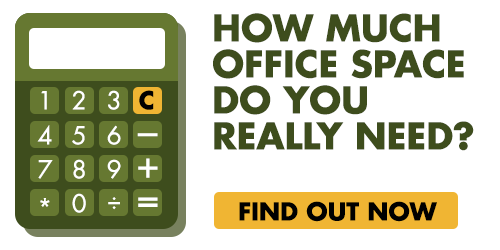In this article, you'll learn:
- How Zoom and Slack are reshaping workplace communication
- The role of Microsoft Teams in virtual collaboration
- The impact of Matterport and Docusign on business operations
- The rise of touchless and telehealth technologies due to COVID-19
While the impacts of the COVID crisis continue to be widespread, businesses are finding ways to not just operate but begin to thrive in this new normal. Much of what they are doing starts with human factors, like creative workers and flexible managers, but technology is also playing a major role in powering how we work today. Interestingly, many of the technologies that follow are not new. Instead, most are existing tools that are getting another look and playing new roles in business.
Zoom
Overnight, companies transitioned from a blend of face to face meetings and (interminable) conference calls to a tweener solution -- the Zoom video conference. During COVID, Zoom has dealt with exponential growth in usage while solving sticky security problems. While it's far from the only videoconferencing tool available, its popularity during this ongoing COVID crisis has turned it into a tool whose name has become synonymous with the entire genre of tools. It's the Kleenex, Xerox, Fedex or Velcro of office life in COVID.
Slack
What Zoom's done for meetings, Slack has done for informal, impromptu conversation. Faster and more informal than email but more powerful, flexible, inclusive and trackable than traditional text messages or simpler messaging systems like Google Messenger, it allows teams to recreate a semblance of the collaboration that happened across cubicle walls or across from the office espresso maker.
Microsoft Teams
With the increased dependence on virtual workspace tools, many companies have turned to integrated suites that combine Zoom-like meetings, Slack-like chat, file sharing, collaboration, and links to applications. Microsoft Teams is one of the best examples of these types of platforms. While the Teams application is most directly comparable to Slack, the platform encompasses everything from Office to OneDrive to Skype, letting your workgroup do just about everything together in a simple application. Google's G Suite is another example of this type of all-encompassing collaboration environment.
Matterport
If a picture is worth a thousand words, what is a detailed three-dimensional walkthrough of a building or space worth? Whether you own far-flung commercial real estate, manage it, or manage a portfolio of spaces for your business, photographs and short videos of spaces can't really take you there. Matterport's 3D cameras allow someone on the ground to capture detailed images, stitch them together, and create an as-if-you-were there walkthrough. This helps with site selection and management.
Docusign
While Docusign and digital signature technology have been around for years, they've always been a "nice to have." Ultimately, until the COVID crisis, you could always get in the same room as the other parties to an agreement and sign the document. With COVID, it was literally impossible to do this in some parts of the country where notaries were barred from traveling to client locations. Docusign and other similar technologies let transactions and negotiations move forward. Some states have even amended their laws to allow notaries to countersign documents via Docusign, further cementing its role in the world thanks to COVID.
Telehealth
While this might not seem directly like a change to the business world, the rapid adoption of telehealth points to three different trends, all of which are directly related to business.
-
Given that roughly eighteen percent of the US economy is related to healthcare, it is a humongous business on its own.
-
A move towards telehealth not only allows your employees to stay healthy but also can potentially reduce the amount of absenteeism related to doctor visits. After all, it's a lot faster to login to a Zoom room than to travel to a clinic.
-
The transition to telehealth will presage ways to use virtual presence technology elsewhere in the workplace.
QR Codes
While QR codes have been popular in other parts of the world, they have largely been a curiosity here in the US. The one exception to this has been in online check-in codes for airlines. Now, QR codes are powering touchless entry systems throughout the economy. They are simple and reliable ways to both identify and track visitors and users.
Touchless Entry... Sign-In.... Elevators
While the scientific consensus, as of mid-July 2020, is that surfaces are not the primary way to transmit COVID, more and more touchless technologies are erring on the side of caution and allowing access and egress without contact. Whether it's a sensor on a door to enable automatic opening and closing, a Bluetooth or Wi-Fi-powered lock on a hotel room or a QR-powered visitor log that enables access and contract tracing, touchless technology is making life in the COVID crisis cleaner, faster, and easier.
Wondering where to begin?
Related Content
- How COVID-19 is Accelerating Commercial IoT
- COVID-19 and Your Office Renewal
- Ways Office Layouts Will Change with COVID-19
- How Workplace Technology Can Support the Return to the Office







